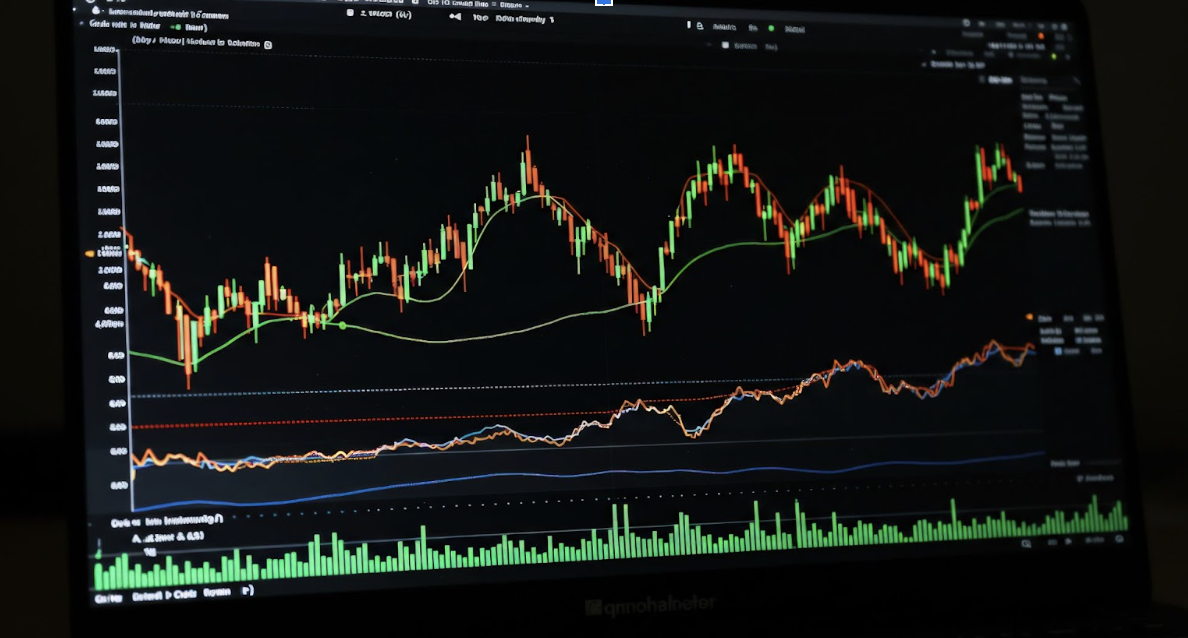Q3 Earnings Automation: Setting Up Money Machine for Earnings Plays
Q3 Earnings Automation: Setting Up Money Machine for Earnings Plays
Q3 earnings season transforms October and November into the year’s most volatile trading period, as thousands of companies report quarterly results that can trigger single-day moves of 10-30% in individual stocks, while simultaneously shifting broader market sentiment. This concentrated catalyst window creates compelling opportunities for systematic traders; however, earnings-driven volatility demands fundamentally different automation parameters than those that work during calmer market periods. The risk-reward profile of earnings differs significantly from that of standard trading. While correctly positioned earnings trades can deliver outsized returns in compressed timeframes, the binary nature of earnings surprises and unpredictable guidance commentary creates failure modes that destroy poorly configured automation strategies.

Money Machine’s power lies in systematic execution and opportunity identification, but earnings season requires enhanced human oversight, tightened risk controls, and realistic expectation-setting that acknowledges a critical truth: earnings automation isn’t “easy money” despite the tempting profit potential. Successful earnings-season automation requires understanding that technology amplifies both opportunity identification and risk management discipline, but cannot eliminate the fundamental unpredictability of how markets interpret quarterly results and forward guidance that often matter more than the actual numbers reported. This article will review scanning strategies, post-earnings gap trading protocols, and critical Money Machine parameter modifications for traders to implement. These changes will distinguish profitable earnings automation from costly lessons in market unpredictability driven by catalysts.
Pre-Earnings Scanning and Setup Strategies
Successful earnings automation begins 5-7 days before announcement dates, through the systematic identification of catalysts worth trading, rather than attempting to trade every quarterly report. Historical earnings reaction analysis reveals patterns specific to individual companies. Some consistently gap and sustain momentum post-earnings, while others gap violently only to reverse within hours; systematic scanning separates these categories before capital deployment. Volatility expansion filters identify stocks exhibiting unusual options activity and widening bid-ask spreads as earnings approach, signaling that institutional traders anticipate significant moves, regardless of direction.
Options activity serves as critical confirmation, with unusual call volume suggesting positive surprise expectations, while elevated put purchasing indicates hedging or bearish positioning. However, experienced traders recognize that options flow can deceive as easily as inform. Sector-specific earnings patterns demand different approaches:
- Technology companies frequently deliver guidance-driven moves that override actual results.
- Retail earnings hinge on same-store sales and inventory levels more than headline numbers
- Healthcare biotechs often see binary reactions to pipeline updates buried in earnings commentary.
Building watchlists well before announcements allows systematic analysis of technical setups, fundamental trends, and reaction patterns. Most importantly, experienced traders recognize that trading the actual earnings announcement represents gambling rather than a systematic strategy. The inability to predict how markets interpret results, the impact of conference call tone and guidance commentary, and the whipsaw volatility during after-hours reactions create conditions where even sophisticated automation fails more often than it succeeds. This makes post-earnings momentum plays significantly more systematic and profitable than attempting to capture the initial reaction.
Post-Earnings Gap Trading with Money Machine
Post-earnings gap trading represents the most systematic approach to earnings opportunities, focusing on momentum continuation after initial reactions rather than gambling on unpredictable announcements. Gap-and-go strategies for positive surprises require volume confirmation showing institutional participation. Gaps with an average volume of 200% or more indicate professional validation, while low-volume gaps often reverse as retail enthusiasm fades. Gap fade opportunities arise when reactions appear excessive in relation to fundamental changes, particularly 15%+ gaps on modest beats, creating mean-reversion setups as emotional reactions give way to rational reassessment.

The critical 30-minute rule, waiting for initial chaos to settle before automated entries, proves essential for Money Machine earnings plays. Traders can use this time to determine whether gaps hold after emotional reactions subside and institutional positioning becomes clear. Setting automated entries requires this delay, combined with volume thresholds and relative strength filters, ensuring sector outperformance, not just company-specific movement. Managing positions that gap against expectations demands pre-planned protocols with immediate exits on 5%+ adverse gaps, protecting capital from extended moves following negative surprises. After-hours announcements create an overnight risk that automation cannot adapt to, making these earnings significantly less suitable for systematic approaches that rely on real-time data evaluation and adaptive position management.
Risk Management for Earnings Volatility
Earnings play demand dramatically reduced position sizing at 50-75% of normal allocations due to binary outcome risks that can trigger devastating losses when automation parameters fail to account for earnings-specific volatility patterns. Stop-loss adjustments must widen significantly beyond standard technical levels—typical 8% stops become ineffective during earnings season. Traders must adapt to using volatility-adjusted stops using ATR calculations that prevent premature exits from standard earnings-day price action. Time-based exits often outperform price-based approaches for earnings trades, as holding periods extending beyond 2-3 days frequently see momentum dissipate regardless of initial gap direction.
Portfolio concentration limits become critical during peak earnings weeks when multiple positions report simultaneously, creating correlated risk that compounds losses when sector-wide disappointments trigger broad selloffs—limiting total earnings exposure to 30-40% of portfolio value prevents catastrophic drawdowns. The fundamental rule is to play the aftermath rather than holding through announcements, as the unpredictability of market interpretation renders pre-earnings positions coin flips, regardless of the quality of fundamental analysis.
Money Machine Parameter Adjustments for Earnings Season
Earnings season demands a comprehensive recalibration of the Money Machine, starting with increased minimum volume requirements of 500,000 or more daily average. This will filter out thinly traded stocks where earnings gaps create liquidity traps that prevent clean exits. Fundamental filters require tightening to emphasize revenue growth consistency and earnings track records, as companies with erratic fundamentals produce unpredictable earnings reactions that defy systematic analysis. Momentum criteria modifications focus on post-earnings sustainability rather than the initial gap magnitude—stocks that maintain 70% or more of their opening gap after two hours demonstrate genuine institutional support, as opposed to emotional retail reactions. Enhanced stop-loss parameters must account for earnings volatility by utilizing wider ATR-based stops, while simultaneously implementing tighter time-based exits. This approach creates protection against extended adverse moves and captures profitable momentum before it dissipates.
Position count reduction becomes critical, focusing automation on 3-5 highest-probability setups rather than attempting to capture every earnings opportunity, as quality dramatically outweighs quantity during volatile catalyst periods. Daily parameter reviews replace set-and-forget approaches, with morning assessments of overnight earnings results informing same-day adjustments to volume thresholds, momentum criteria, and risk parameters that adapt to evolving market conditions throughout peak reporting weeks.

Systematic Approach to Earnings Season Success
The dangerous assumption that positive earnings automatically drive stock prices higher overlooks market dynamics where guidance, sector positioning, and institutional flows often override headline results, while neglecting sector sympathy misses opportunities in related stocks that react to bellwether earnings. Fighting institutional positioning after earnings—attempting to fade moves backed by professional money flows—consistently produces losses as retail contrarian bets get steamrolled by sustained institutional conviction.
Automation helps identify and execute earnings opportunities systematically, but doesn’t eliminate the complexity inherent in catalyst-driven volatility, requiring human judgment for guidance interpretation, sentiment assessment, and qualitative factor evaluation. A post-earnings review and strategy refinement separate traders who improve their quarterly performance from those who repeat mistakes, analyzing which setups worked, which parameters need adjustment, and how market conditions affected outcomes.
Trade Ideas’ scanning capabilities and Money Machine automation transform earnings chaos into systematic opportunity for traders committed to active oversight, disciplined risk management, and continuous refinement—success demands recognizing that technology amplifies expertise rather than replacing the judgment, preparation, and adaptive thinking that separate profitable earnings strategies from expensive lessons in market unpredictability.
